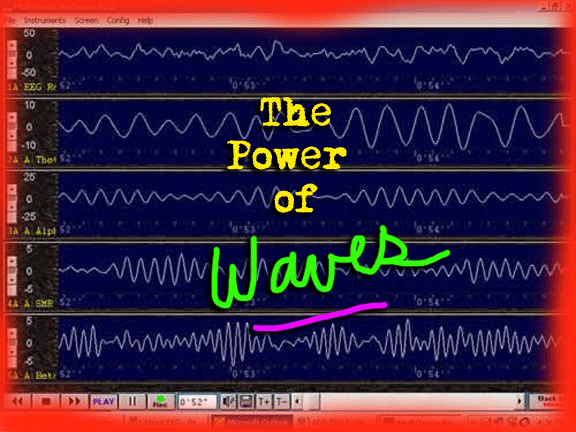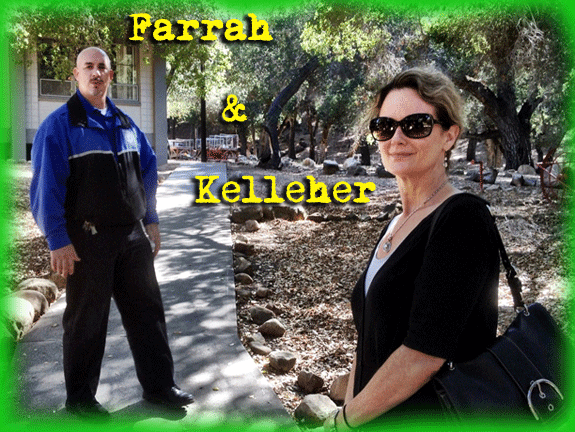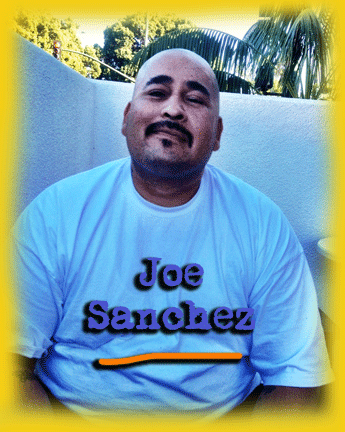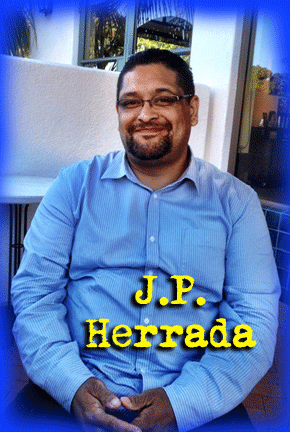EDITOR’S NOTE: Next year, among other topics, we’ll be looking deeply into how we incarcerate kids in the state of California and in our various counties, notably Los Angeles. We’ll be looking for the promising bright spots, as well as the disasters that demand reform. We want to know what approaches help kids succeed, while we shine a spotlight on the methods that simply break kids further, and how the various policies collaterally affect the health and well-being of our communities, for good or ill.
The following story is an early look at one small foray into the world of juvenile justice and corrections. In 2013 there will be much more where this came from, .
THE ART OF CHANGING BRAINS
Can Neurofeedback Help Incarcerated Kids Heal the Effects of Childhood Trauma?
by Celeste Fremon
The fight that broke out in the school building of the Los Prietos Boys Camp and Academy ignited quickly. A couple of kids who were reputed to be gang members exchanged words, then blows. Swarming adults broke up the clash almost as fast as it started.
After it was over, the boy who seemed the most upset by the brawl was not one of the fighters, but a fourteen-year old kid whom we’ll call Daniel*, who stood at the edge of the fight looking more frightened than the actual situation demanded.
Minutes later, Daniel was still in a state of high distress. Seeing he needed help in calming down, a staff member brought him to the camp’s central office.
“He’s a sensitive kid and we saw that some kind of crisis intervention was called for,” said Dean Farrah, the Director of Los Prietos., which is a set of twinned juvenile probation lock-ups co-located on 17 acres in the Los Padres National Forest of Santa Barbara County. Usually, Farrah said, this would have meant meeting with one of the facilities’ two on-site mental health counselors. But in the past few months, Daniel had been taking part in a unique pilot program at Los Prietos called the Juvenile Neurofeedback Project, run by a neurofeedback therapist and researcher named Elizabeth Kelleher. With this in mind, the staff decided to try something a little different. Daniel would first do a session with Kelleher. Conventional counseling could come second.
Kelleher determined right away that the boy’s reaction was not so much about the recent brawl, but the result of deeper fears from Daniel’s past, which the brief slugfest had somehow triggered. Kelleher already knew that, as child, Daniel had repeatedly been exposed to what she describes as “extreme violence” in his family. She surmised that the fight had restimulated those earlier traumas, and adjusted her treatment of Daniel accordingly.
The strategy worked. After his time with Kelleher, Daniel’s anxiety levels were notably different, said Farrah. His gaze was no longer darting and disconnected. And when he did sit down with one of the Los Prietos therapists, “he was able to engage again,” and talk about what had so upset him.
Kelleher agreed. “Daniel has been through what we call developmental trauma,” she said, which can disrupt a kid’s sense of safety. “Our session helped him to know he can be okay.”
________________________________________________________________________________________________
THE ART OF CHANGING BRAINS
The method that Kelleher used to help Daniel is called neurofeedback, also known as EEG biofeedback. It is a therapeutic process that allows patients to alter their own neuro-activity, specifically their brainwaves, through a feedback system that “rewards” the brain when it produces the desired wave frequency, and withholds rewards when it doesn’t.
In the simplest terms, the method works as follows: First the clinician attaches electrodes to the scalp of the client to assess current brainwave activity via a computer program. Thus the clinician can determine what frequencies predominate at a given moment: Delta (deep, dreamless sleep), Theta (deep relaxation, meditation,) Alpha (your brain in idle in a safe environment), Beta (relaxed and focused), Beta 1 (focused and very alert), Beta 2 (high states of arousal, tension, anxiety, hyper vigilance. Fight and flight).
In Kelleher’s project, once the electrodes were attached at the session’s beginning, and the kid’s brainwaves assessed, each kid would sit at a second computer and play a specially designed video game. When the subject’s brain activity moved toward the desired new frequency range, the game provided “rewards” (pleasurable sounds, on-screen actions, and an increased ease in playing the game).
“For instance,” said Kelleher, “when we get a kid who has 75 percent Beta 2 [anxiety or arousal], and 25 percent Beta [relaxed and focused], we want to reverse those percentages.” Once the practitioner put the desired protocol in place, the kid would— without any conscious effort—begin moderating his brainwaves in the new, healthier direction, simply by playing the computer game.
THE BIRTH OF A PROJECT
Kelleher came up with the idea for the neurofeedback project when she was working with at risk kids at a Santa Barbara County continuation school, and noticed that many of the students were, like Daniel, suffering from trauma springing from violence and/or victimization experienced in childhood.
A former fundraiser who went back to get her master’s degree in psychology after she turned 40, Kelleher was also trained as a neurofeedback therapist, working at the Santa Barbara Neurofeedback Center, and had known the method have good results for adults with issues like Post Traumatic Stress and depression. She thought it might be a good tool to use to help traumatized incarcerated kids, and discussed the idea of a pilot program with her boss and mentor at the school, a man named Lennie Kwock, who was, at the time, the Juvenile Program Manager for the Santa Barbara County Department of Mental Health. Kwock loved the idea and agreed to sign on has her partner and to help her navigate through the county’s various bureaucracies in order to get the project off the ground.
When Kelleher approached Dean Farrah with her idea, the two Los Prietos facilities were already far more progressive than most of California’s probation camps “We try to have programs that challenge our kids to succeed,” said Dean Farrah, “not dare them to fail.”
Still, the whole brain-training idea that Kelleher suggested was a little farther out than Farrah and his staff was used to. Yet, he was impressed with the material that she presented and, after a string of meetings, he decided there was nothing to lose by giving it a try. “We’re always open to something that that’s a better method.”
It took nearly two years to get all the remaining bureaucratic approvals, which included a go-ahead from the higher-ups in Santa Barbara County’s probation department, and a positive nod from the county’s juvenile court system. The kids themselves also had to sign on, along with their parents. “Beyond certain requirements, we don’t force kids into any of the programs,” Farrah said.
By March 15, 2012, however, all the hurdles had been cleared and the project was ready to go.
KIDS SET UP FOR FAILURE
The concept of “trauma-informed” treatment programs has gained a growing traction within the nation’s research community but, with rare exceptions, it has yet to find its way to public policy. Research estimates that 75 to 93 percent of youth entering the nation’s juvenile justice systems annually have experienced some kind of what is called “traumatic victimization”—sexual or physical abuse, neglect and so on. A study of children held in a Chicago detention center found that over half of those studied had experienced more than six traumatic events prior to their detainment. Two studies reviewing the link between trauma and juvenile justice involvement found that among males who experienced childhood “maltreatment” prior to 12 years of age, 50-79 percent became involved in serious juvenile delinquency.
Of course, not all kids respond to trauma by getting in trouble with the law, but a great many do. And, a growing list of studies make clear that, to incarcerate kids without addressing these underlying issues, all but guarantees a young man or woman will be set up for failure when he or she is released, which is what has been occurring in a great many of California’s probation camps—Los Angeles County’s recidivism-heavy camps being the prime example.
Although cognitive behavioral therapy is being used with some success by a few of the state’s more progressive county facilities, like Los Prietos, most juvie lock-ups still rely heavily on drugs. “Psychotropic medication is the primary intervention we have for youth with neurobehavioral disorders,” said Kelleher.
I ALWAYS USED TO FEEL THE GROUND SHAKING UNDER ME
Kelleher began her six-month pilot in March 2012, with ten boys ranging in age from 13 to 18. By the time the program finished in mid-September, each kid had been given 32 to 40 neurofeedback sessions, which Kelleher and her team had individually tailored to address the various trauma-based mental health conditions with which kids in juvenile detention facilities most commonly suffer—things like anxiety disorder, depression, PTSD (Post Traumatic Stress Disorder) and ADHD (Attention Deficit Hyperactive Disorder).
Even in the project’s early days, Dean Farrah said he saw recognizably positive results. “I’d stop the kids after their sessions all the time, and they’d tell me, ‘Yeah, it’s pretty good. I feel more calm,’” Farrah said. “When kids are calm, they can make better decisions.” Over all, said Farrah, her felt that the neurofeedback kids were gaining a “different kind of mental and emotional skill set.”
Spencer Cross, the Supervising Probation Officer for Los Prietos Academy, also talked about the positive changes he noticed in the boys early on. (In addition to his position with Los Prietos Academy, Cross was the main staff liaison for Kelleher’s project and, along with Farrah, was the guy inside the system who was largely responsible for making the pilot happen.) “For example,” said Cross, “the number one thing they said to me is that they could sleep better. And improving kids’ sleep is a big deal. They often come to us here with PTSD nightmares.”
One kid, we’ll call him Victor*, was particularly expressive in explaining the changes he noticed in himself. When he first began his sessions, Victor was a skinny 16-year-old who reported off-the-charts anxiety. It seemed that Victor’s father was out of the picture and his stepfather, a meth addict, had beat him ferociously on a regular basis without seeming provocation. Victor explained that, after he began doing meth with the abusive stepfather, at age 12, he found he was able to nominally connect with the man, and the beating pretty much subsided—replaced by a killer meth habit.
During each session, Kelleher would ask her subjects to rate the intensity of things that bothered them—depression, anxiety, drug cravings, anger—on a scale of 0 to 10, 10 being the most intense.
“When Victor came in, he rated his cravings for meth at 10. By about the 8th session, they’d zeroed out.” His anxiety went through a similar downward trend.
““I used to always feel like the ground was shaking under me,” Victor said to Kelleher after one of his sessions “Now I feel like I’m just standing here. “
I WASN’T JUST SCARED, I WAS TERRIFIED
Kelleher found that, once the kids had a few sessions under their belts, they generally stuck with the program. The challenge, she said, was getting boys to sign up in the first place—mainly because the idea of someone messing around in their brains scared them. “They wanted to know if we’d be able to read their thoughts,” she said. “They were also afraid that they’d lose their ability survival in the street, once they got out.”
Realizing that the kids were likely going to need more than merely her assurance that neurofeedback would help not harm them, before she geared up at Los Prietos, Kelleher and her mentor, Kwock, contacted two respected local gang intervention workers, Joe Sanchez and J.P. Herrada, and asked them if they’d be willing to submit themselves to several months of the treatments as a sort of two-person trial group.
As it turned out, however, the two adults had the same fears that plagued the kids.
Joe Sanchez, 42, is a mountain of a man and an expert at surviving in circumstances where survival is frequently a challenge. He joined a gang in 1982, when he was 12, then spent his next 26 years alternating between a violence-plagued life on the street, and stints in lock-up, first in juvenile facilities, then cycling in and out of a succession of California prisons, where just standing in the chow line for meals, could mean a violent attack, he said.
Sanchez was last paroled in 2009, at age 38, at which time he decided he was going to live a resolutely legal life for the sake of his kids. Eventually, he found a job at Palabra, the well-regarded violence intervention program that J.P. Herrada was running.
When Kelleher contacted Herrada and Sanchez about participating in the neurofeedback program, Sanchez in particular was initially appalled at the idea.
“I was terrified,” Sanchez said. “I was scared I’d lose my edge. Even now, when I walk, I look at shadows,” he said, “to know what’s going on behind me.”
Sanchez said he also had a post-prison habit of walking with his shoulders scrunched upward, as if against a hard wind, whenever he was in a public setting. “I learned to do that to protect my neck, because, in prison, if someone’s going to shank you,” he jabs a finger at his carotid artery, “that’s where they’re going to do it.”
Sanchez wondered if he’d lose all these well-honed protective skills by participating in Kelleher’s program. But, at JP’s urging, he went ahead anyway. “I figured if it would have a chance at helping the kids we work with….well, that was important.”
And so both Sanchez and Harrada submitted to the electrodes and the video games. Sanchez said he saw a difference almost immediately. “After the second or third session, it’s like I got Spiderman senses!” he said. “I’m serious. I could hear and see things I hadn’t noticed before because of, you know, anxiety.” With additional sessions, a hand tremor that had plagued Sanchez since he’d been released from prison, simply vanished. “It just stopped.”
Herrada was similarly blown away. “Truthfully, I thought it sounded like B.S.,” he said. “But I was amazed at how it helped my memory. It also helped with the anxiety I used to feel over public speaking.” Overall, the 70 or so treatments each man received made him feel more internally “balanced,” said Herrada.
“See, the kids we work with are always so out of balance because of what they’ve been through, that they use substances to be able to get through the day,” he continued. “If those same kids can learn to balance themselves through neurofeedback, then they have a chance.”
Thus armed with their own experience, Sanchez and Herrada came with Kelleher to make sales pitches to the Los Prietos kids. “It worked for us, and it can work for you,” they said.
THE NUMBERS AND THE FUTURE
Now that Kelleher ‘s pilot program has ended at Los Prietos, the next step is for a group of statisticians to analyze the raw data that the project produced to see what difference the treatments made, statistically speaking, beyond the promising anecdotal changes in the kids that everyone observed.
“The bulk of the programs we offer are data driven,” said Farrah. “So we have to do some work to see how we measure the neurofeedback program in terms of recidivism, for example.
“But, I’m fortunate enough to work in a county that values innovation,” Farah added. “So I’m optimistic that we’re going to find a way to continue this program.”
Kelleher too is optimistic. While she awaits results from the stat crunchers, she is already planning how round two of the work can be even better. Like Farrah, she feels that a big part of the challenge is preventing recidivism. “When the guys get out of camp, they’re faced with all the same conditions and triggers that caused their trauma in the first place,” she said. So ideally she’d like to see kids be required to attend a few months worth of post camp sessions as a condition of their probation.
““The brain is plastic,” Kelleher said. “It can change. You can create a new neural pathway in about three months.” However, for the change to become permanent in the face of the old traumatizing environment, “some reinforcement helps a lot. “
Sanchez and Herrara also said they were convinced that neurofeedback could be an important tool in their work of reducing youth on youth violence. In fact, the pair’s only criticism of the program was that it should be offered to more kids, including the harder core young men and women whose more severe criminal offenses typically excluded them from Los Prietos, and innovative programs like Kelleher’s.
“In our society,” said Herrada, “we have an accepted number of kids who we’re willing to cross off.”
Sanchez nodded agreement. “Some kids we decide it’s okay to throw away.” A pause. “I was one of those kids. And I really believe this program can help them the way it helped me. Otherwise,” he said, “when those kids get locked up, and then get out, they don’t come out better, they come out angrier, and more anxious, because they know we don’t care about them, they know they’re being thrown away.”
With programs like Kelleher’s, he said, “that doesn’t have to happen.”
*Note: All kids’ names have been changed to protect their privacy as minors.





Wonderful program ,Iam with Families Act group . Wondering if the Neurofeedback is being used with adults … What a wonderful therapy if used in the prsions 3 or 6 months before release …. like a reentry program … Its a thought ! i have an adult son in prison due to get out in May … He is dually diagnosed schizophrenic and heroine addict He’d love to try something like this … thank you, Debra
I conducted a similar program funded by the Philadelphia Office of Mental Health and Mental Retardation in 1999 with a group of children who were involved in either intensive outpatient or residential treatment for both attention, learning and behavioral disorders. All these children had suffered trauma in their lives and some had been removed from their homes as a result. Most were being medicated and were diagnosed with ADHD and oppositional deviant disorder (ODD).
We used the very earliest forms of neurofeedback technology running on Windows 95 computers and displaying small graphic images of rocket ships or Pokemon characters the moved up and down on the screen in response to the brainwave activity. Each child was seen in treatment once or twice a week if they were in the outpatient program and 4x/week if they were in the residential facility. The results were quite noticeable and documented, ie., reduced violent acting out, decreased need for meds, improved grades and psychological assessment scores as well as positive reports from parents, teachers and social workers. This was all documented in a report that was never released by the department because the director of children and youth services who authorized the report was not in the role at the end and the new director wasn’t interested in promoting his predecessors policies or programs.
Maybe 12 years later systems are more open like in CA. However, I’m wondering what’s happened since 2012?
Marvin Berman PhD
Quietmind Foundation
http://www.quietmindfdn.org
BrainPaint neuro-feedback changed my life age 62! I suffered trauma long ago. Now my mind is just amazing here in the present moment! No bullshit is this neuro-feedback!